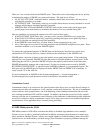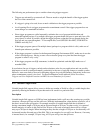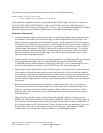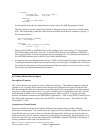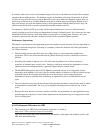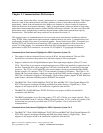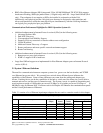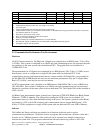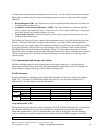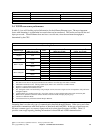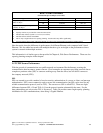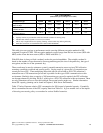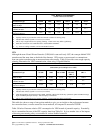
Chapter 5. Communications Performance
There are many factors that affect System i performance in a communications environment. This chapter
discusses some of the common factors and offers guidance on how to help achieve the best possible
performance. Much of the information in this chapter was obtained as a result of analysis experience
within the Rochester development laboratory. Many of the performance claims are based on supporting
performance measurement and analysis with the NetPerf and Netop workloads. In some cases, the actual
performance data is included here to reinforce the performance claims and to demonstrate capacity
characteristics. The NetPerf and Netop workloads are described in section 5.2.
This chapter focuses on communication in non-secure and secure environments on Ethernet solutions
using TCP/IP. Many applications require network communications to be secure. Communications and
cryptography, in these cases, must be considered together. Secure Socket Layer (SSL), Transport Layer
Security (TLS) and Virtual Private Networking (VPN) capacity characteristics will be discussed in
section 5.5 of this chapter. For information about how the Cryptographic Coprocessor improves
performance on SSL/TLS connections, see section 8.4 of Chapter 8, “Cryptography Performance.”
Communications Performance Highlights for IBM i Operation System 5.4:
y The support for the new Internet Protocol version 6 (IPv6) has been enhanced. The new IPv6
functions are consistent at the product level with their respective IPv4 counterparts.
y Support is added for the 10 Gigabit Ethernet optical fiber input/output adapters (IOAs) 573A and
576A. These IOAs do not require an input/output processor (IOP) to be installed in conjunction with
the IOA. Instead the IOA can be plugged into a PCI bus slot and the IOA is controlled by the main
processor. The 573A is a 10 Gigabit SR (short reach) adapter, which uses multimode fiber (MMF)
and has a duplex LC connector. The 573A can transmit to lengths of 300 meters. The 576A is a 10
Gigabit LR (long reach) adapter, which uses single mode fiber (SMF) and has a duplex SC connector.
The 576A can transmit to lengths of 10 kilometers. Both of these adapters support TCP/IP, 9000-byte
jumbo frames, checksum offloading and the IEEE 802.3ae standard.
y The IBM 5706 2-Port 10/100/1000 Base-TX PCI-X IOA and IBM 5707 2-Port Gigabit Ethernet-SX
PCI-X IOA supports checksum offloading and 9000-byte jumbo frames (1 Gigabit only). These
adapters do not require an IOP to be installed in conjunction with the IOA.
y The IBM 5701 10/100/1000 Base-TX PCI-X IOA does not require an IOP to be installed in
conjunction with the IOA.
y The IBM Cryptographic Access Provider product, 5722-AC3 (128-bit) is no longer required. This is
a new development for the 5.4 release of IBM i Operation System. All 5.4 systems are capable of the
function that was previously provided in the 5722-AC3 product. This is relevant for SSL
communications.
Communications Performance Highlights for IBM i Operation System 5.4.5:
y The IBM 5767 2-Port 10/100/1000 Based-TX PCI-E IOA and IBM 5768 2-Port Gigabit Ethernet-SX
PCI-E IOA supports checksum offloading and 9000-byte jumbo frames (1 Gigabit only). These
adapters do not require an IOP to be installed in conjunction with the IOA.
IBM i 6.1 Performance Capabilities Reference - January/April/October 2008
© Copyright IBM Corp. 2008 Chapter 5 - Communications Performance 64



